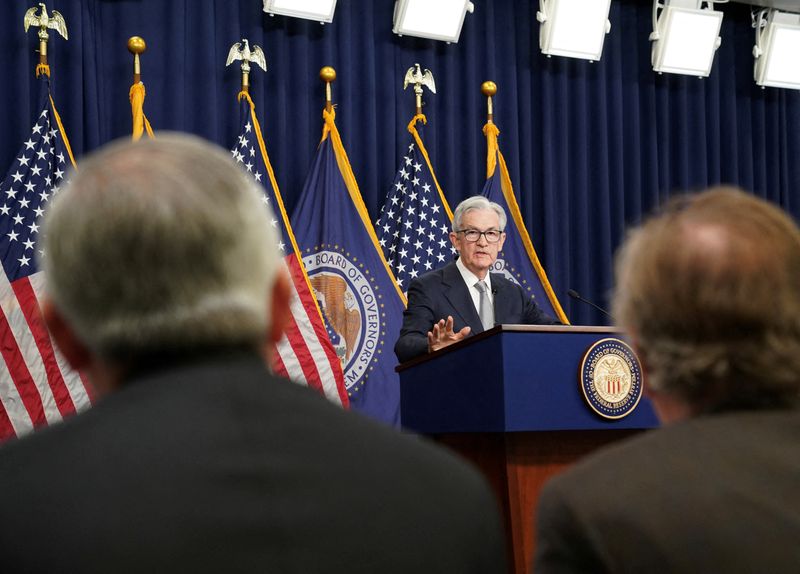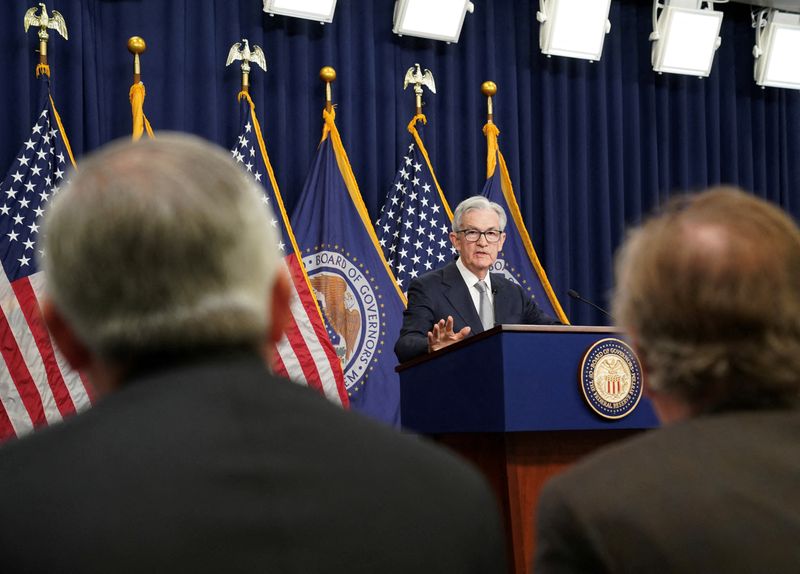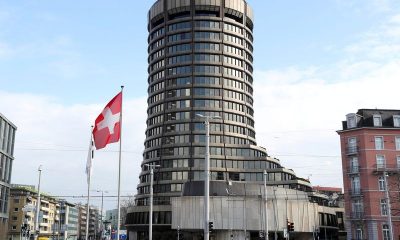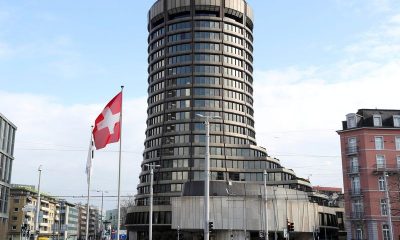Economy
Fed rate hikes may be done as labor market cools further


© Reuters. FILE PHOTO: Federal Reserve Board Chairman Jerome Powell answers a question at a press conference following a closed two-day meeting of the Federal Open Market Committee on interest rate policy at the Federal Reserve in Washington, U.S., November 1, 2023.
By Ann Saphir and Howard Schneider
(Reuters) – Slowing U.S. job growth and cooling wage pressures may give Federal Reserve policymakers renewed confidence the U.S. economy is adjusting from the shock of the coronavirus pandemic, allowing inflation to continue to ease without the need for further interest rate increases.
That was the bet in financial markets after the Labor Department reported nonfarm payrolls increased by 150,000 last month, below the pre-pandemic trend for only the third time since December 2020, and hourly earnings rose 4.1% from a year earlier, the smallest increase since June 2021.
Bond yields fell, and traders of contracts tied to the Fed’s policy rate now see only a 12% chance of a rate hike by January, down from 30% before the release of the employment report. Rate futures pricing now reflects a better-than-even chance of a Fed rate cut by May of 2024, with several more cuts expected later next year.
U.S. central bankers themselves are not even thinking about rate cuts, Fed Chair Jerome Powell said this week after the Fed kept its benchmark overnight interest rate steady in the 5.25%-5.50% range. Policymakers are waiting for more confirmation the economy is coming into better balance after pandemic disruptions to the supply of goods and labor helped push inflation to 40-year highs last year.
But Powell also signaled a further rate hike could yet be in the offing as he and his central bank colleagues were not yet confident that monetary policy is restrictive enough to bring inflation down to the Fed’s 2% target. He cited the rise in longer-term borrowing costs, including the rise in 30-year fixed-rate mortgages to nearly 8%, as potentially doing some of the work that otherwise might be needed to be done by the Fed.
The drop in longer-term borrowing costs, with the yield on the benchmark 10-year Treasury note falling below 4.5% after the release of the jobs report, poses a problem that, if it continues, may actually bolster the case for another Fed rate hike to ensure overall borrowing conditions do not loosen.
That decision will hinge on the performance of inflation in the weeks leading up to the Fed’s Dec. 12-13 policy meeting. Investors and analysts at this point largely expect price pressures to continue easing and the Fed to remain on hold as a long-awaited slowdown in hiring appears to take shape.
The average monthly payrolls gain over the last three months has slowed to 204,000, the latest jobs report showed, after peaking in the summer of 2021 at 708,000. That is nearing the average monthly job gain of 183,000 during the 10 years leading up to the pandemic.
The report, Richmond Fed President Thomas Barkin told CNBC, was “welcome to see” and backs up information he has received from his business contacts.
“What I’ve been hearing is normalizing,” Barkin said. The key, he said, will be what reports on inflation show in coming months.
Inflation by the Fed’s preferred measure has held around 3.4% for the last couple of months, down from 7.1% last summer but still above the Fed’s 2% goal.
SOFT LANDING
After lifting the policy rate rapidly last year, Fed policymakers are seeking a stopping point that is high enough to bring inflation down but not so high that it does excessive damage to the labor market. Powell on Wednesday indicated the Fed is still steering toward what has been that historically elusive “soft landing” for the economy.
Overall the latest jobs report was “tailor-made to match Powell’s soft landing message from earlier this week,” as JPMorgan chief U.S. economist Michael Feroli said in a note to investors. And despite financial conditions loosening, he said, it will be the economic data that determines what the Fed will do, “and the data say we’re done with rate hikes.”
But he and other analysts also noted the report had hints of risk to that scenario, including a decline in the job-finding rate of those already unemployed, coupled with a second straight monthly uptick in unemployment.
“Continued upward momentum would be troubling, and hopefully this recent rise levels off as the labor market recovery continues,” said Indeed.com’s Nick Bunker.
Judging from the flow of workers into and out of jobs and job searches, said Inflation Insights’ Omair Sharif, it appeared workers were having a tougher time landing employment, a reversal from the heady days of the “great resignation” when employees were skipping from job to job and some occupations were registering double digit wage gains.
Employment at bars and restaurants, a locus of high labor demand during the pandemic, dropped in October, he noted.
Still for now, most of the worries about the labor market appear to be focused on what might, or might not, happen next rather than on the evidence so far.
“We are transitioning to the next phase of recovery,” said acting U.S. Labor Secretary Julie Su.
Economy
Russian central bank says it needs months to make sure CPI falling before rate cuts -RBC


© Reuters. Russian Central Bank Governor Elvira Nabiullina attends a news conference in Moscow, Russia June 14, 2019. REUTERS/Shamil Zhumatov/File Photo
MOSCOW (Reuters) – Russia’s central bank will need two to three months to make sure that inflation is steadily declining before taking any decision on interest rate cuts, the bank’s governor Elvira Nabiullina told RBC media on Sunday.
The central bank raised its key interest rate by 100 basis points to 16% earlier in December, hiking for the fifth consecutive meeting in response to stubborn inflation, and suggested that its tightening cycle was nearly over.
Nabiullina said it was not yet clear when exactly the regulator would start cutting rates, however.
“We really need to make sure that inflation is steadily decreasing, that these are not one-off factors that can affect the rate of price growth in a particular month,” she said.
Nabiullina said the bank was taking into account a wide range of indicators but primarily those that “characterize the stability of inflation”.
“This will take two or three months or more – it depends on how much the wide range of indicators that characterize sustainable inflation declines,” she said.
The bank will next convene to set its benchmark rate on Feb. 16.
The governor also said the bank should have started monetary policy tightening earlier than in July, when it embarked on the rate-hiking cycle.
Economy
China identifies second set of projects in $140 billion spending plan


© Reuters. FILE PHOTO: Workers walk past an under-construction area with completed office towers in the background, in Shenzhen’s Qianhai new district, Guangdong province, China August 25, 2023. REUTERS/David Kirton/File Photo
SHANGHAI (Reuters) – China’s top planning body said on Saturday it had identified a second batch of public investment projects, including flood control and disaster relief programmes, under a bond issuance and investment plan announced in October to boost the economy.
With the latest tranche, China has now earmarked more than 800 billion yuan of its 1 trillion yuan ($140 billion) in additional government bond issuance in the fourth quarter, as it focuses on fiscal steps to shore up the flagging economy.
The National Development and Reform Commission (NDRC) said in a statement on Saturday it had identified 9,600 projects with planned investment of more than 560 billion yuan.
China’s economy, the world’s second largest, is struggling to regain its footing post-COVID-19 as policymakers grapple with tepid consumer demand, weak exports, falling foreign investment and a deepening real estate crisis.
The 1 trillion yuan in additional bond issuance will widen China’s 2023 budget deficit ratio to around 3.8 percent from 3 percent, the state-run Xinhua news agency has said.
“Construction of the projects will improve China’s flood control system, emergency response mechanism and disaster relief capabilities, and better protect people’s lives and property, so it is very significant,” the NDRC said.
The agency said it will coordinate with other government bodies to make sure that funds are allocated speedily for investment and that high standards of quality are maintained in project construction.
($1 = 7.1315 renminbi)
Economy
Russian central bank says it needs months to make sure CPI falling before rate cuts -RBC


© Reuters. Russian Central Bank Governor Elvira Nabiullina attends a news conference in Moscow, Russia June 14, 2019. REUTERS/Shamil Zhumatov/File Photo
MOSCOW (Reuters) – Russia’s central bank will need two to three months to make sure that inflation is steadily declining before taking any decision on interest rate cuts, the bank’s governor Elvira Nabiullina told RBC media on Sunday.
The central bank raised its key interest rate by 100 basis points to 16% earlier in December, hiking for the fifth consecutive meeting in response to stubborn inflation, and suggested that its tightening cycle was nearly over.
Nabiullina said it was not yet clear when exactly the regulator would start cutting rates, however.
“We really need to make sure that inflation is steadily decreasing, that these are not one-off factors that can affect the rate of price growth in a particular month,” she said.
Nabiullina said the bank was taking into account a wide range of indicators but primarily those that “characterize the stability of inflation”.
“This will take two or three months or more – it depends on how much the wide range of indicators that characterize sustainable inflation declines,” she said.
The bank will next convene to set its benchmark rate on Feb. 16.
The governor also said the bank should have started monetary policy tightening earlier than in July, when it embarked on the rate-hiking cycle.

 Forex3 years ago
Forex3 years agoForex Today: the dollar is gaining strength amid gloomy sentiment at the start of the Fed’s week

 Forex3 years ago
Forex3 years agoUnbiased review of Pocket Option broker

 Forex3 years ago
Forex3 years agoDollar to pound sterling exchange rate today: Pound plummeted to its lowest since 1985

 Forex3 years ago
Forex3 years agoHow is the Australian dollar doing today?

 Cryptocurrency3 years ago
Cryptocurrency3 years agoWhat happened in the crypto market – current events today

 World3 years ago
World3 years agoWhy are modern video games an art form?

 Commodities3 years ago
Commodities3 years agoCopper continues to fall in price on expectations of lower demand in China

 Economy3 years ago
Economy3 years agoCrude oil tankers double in price due to EU anti-Russian sanctions

























